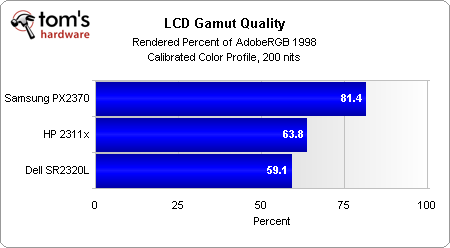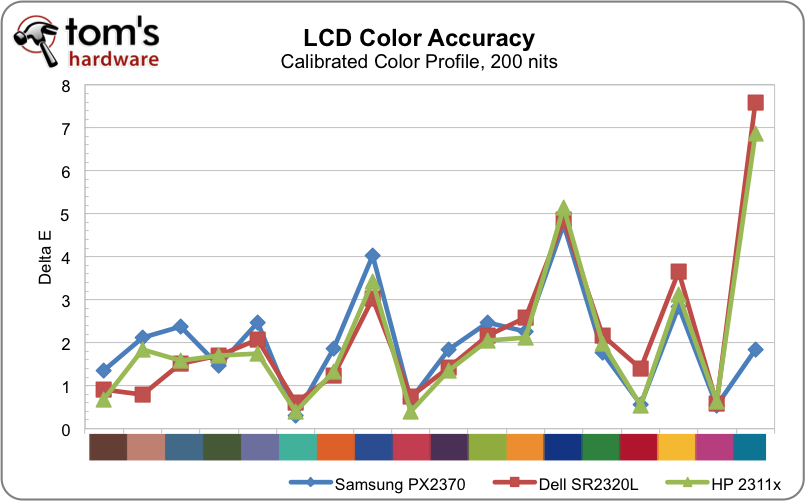Three-Way 23" LED LCD Roundup: Dell, HP, And Samsung
We've spent a lot of time evaluating the performance of graphics cards and processors, but a good monitor is almost every bit as important to gamers and professionals alike. For our first look at monitors in 2011, we are starting out with three 23" LCDs.
Calibrated Performance: Color Accuracy And Gamut
As Coloreyes Display Pro explains, absolute rendering the black point produces the most numerically accurate results, and works well for high-quality monitors. But doing so could also easily generate plugged shadows (dark regions where detail is lost) on a lower-quality monitor. If matching two displays is critical, absolute rendering is the best choice, assuming both monitors can handle absolute black. Relative rendering maps the darkest values on your monitor relative to its ability to display them. This isn't as accurate, but provides detail in dark areas where your monitor has difficulty.
Since we are trying to compare the color quality between monitors, we choose to calibrate for an absolute black point. These values represent the best we can achieve with our monitors, but they add another variable to consider when judging color performance. Dell's 23" LCD consistently produces the darkest blacks, but it does suffer from plugged shadows. The effect is very minor, and HP's performance is still arguably worse; shadows aren't visible, but the lack of sufficiently dark blacks yields a poor contrast in the color gamut. By comparison, Samsung's PX2370 generates a much better white point, which is why contrast isn't negatively affected.

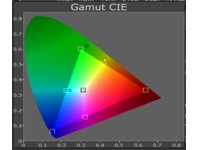
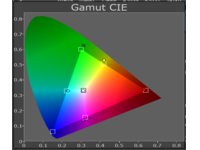


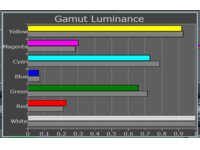
The range of colors doesn't change when you calibrate a monitor. A wide-gamut monitor still behaves like a wide-gamut monitor, even when you turn down brightness. However, when you calibrate a monitor, color perception changes as colors become more accurately represented. This is the result of changing the shape of the luminance curve on a gamut map.
After calibration, we evaluated the profile against a GretagMacBeth's color palette. As we mentioned earlier, delta E is a measure of color accuracy. However, this only gives a small perspective of color performance because we interpret colors within a spectrum, not from individual points.
Absolute Color Gamut
It's harder to perceive the difference in gamut when you’re inspecting individual delta E values. With 3D images, it is best to examine the graph as a video, which is why we use Chromix's ColorThink Pro to illustrate how color gamut is affected.
The wire form outline in each video represents the total gamut volume of AdobeRGB 1998. The solid gamut map represents the gamut of each monitor.
Get Tom's Hardware's best news and in-depth reviews, straight to your inbox.
Remember, this is not just an examination of how one color profile maps to a reference, nor is it only about how much can be rendered (in this case AdobeRGB 1998). This is an absolute comparison of gamut volumes, which can be used to help identify strong and weak points in a color profile.
When you compare in absolute terms, you can see that Samsung's PX2370 is particularly good at representing the entire color gamut, though some of the higher luminance values still fall short of the reference. Dell's SR230L is the weakest of the group. It produces very poor greens, green-blues, and even some reds. The 2311x shares this fault. However, it is not as weak in the secondary colors of magenta and cyan.
Notice that all three monitors perform very well in yellow and blue tones. These are the fairly easy points to hit with today's LED-based TN panels. Often you can see a strong blue bias caused by some lower-quality LED backlights. This is what we see with the monitors from Dell and HP. When you inspect the 3D map, you can see the shifted performance of the color gamut. If you are dead-set on matching the white point on multiple monitors or highly accurate color representation, this can be unsettling. However, as a practical issue, it shouldn't deter you from purchasing them.
Current page: Calibrated Performance: Color Accuracy And Gamut
Prev Page Calibrated Performance: Brightness And Contrast Ratio Next Page Black And White Uniformity, Viewing Angles-
fstrthnu I'd actually rather see a 24 & 25.5" monitor shootout, they tend to be the higher-end displays of the brands (like Dell's super-duper Ultrasharp U2410).Reply -
Assmar A certain retailer has the samsung monitor listed for 280 with free shipping. If you don't live in CA, that's tax free, i'm pretty sure.Reply -
sleeper52 fstrthnuI'd actually rather see a 24 & 25.5" monitor shootout, they tend to be the higher-end displays of the brands (like Dell's super-duper Ultrasharp U2410).Reply
+1 I'd like to see that. HP LP2475w (rev 2.0) vs Dell U2410 (rev 2.0) vs ASUS PA246Q -
LuckyDucky7 Why would you bother buying one of these monitors when you can get an IPS one for the same price?Reply
How about reviewing something like the ASUS ML239H and give us a useful review, rather than going over which one of these junk TN panels is the best? 100% sRGB is useless if you can't see it unless you're straight inline with the screen (any sometimes not even then).
KTHXBAI

